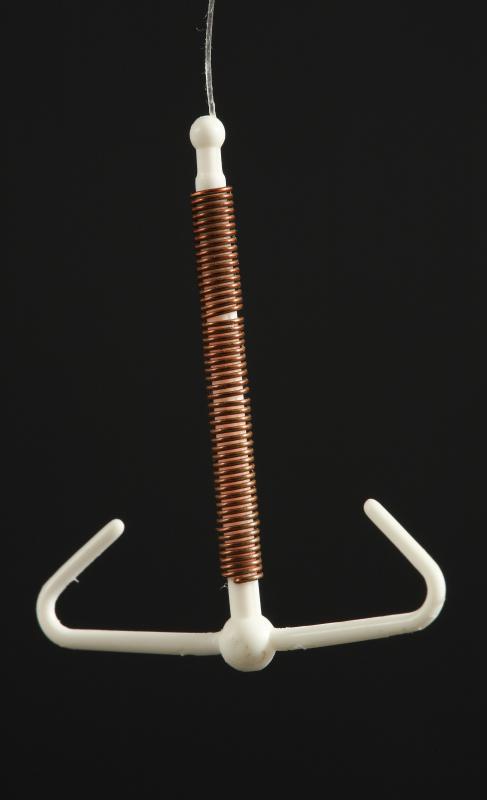At WiseGEEK, we're committed to delivering accurate, trustworthy information. Our expert-authored content is rigorously fact-checked and sourced from credible authorities. Discover how we uphold the highest standards in providing you with reliable knowledge.
What Are the Different Types of Contraceptive Devices?
There are several types of contraceptive devices that can be used to prevent pregnancy. These devices include barrier methods of contraception, spermicides and the intrauterine device (IUD). Additional types of contraceptive devices include some hormonal contraceptives that are embedded in a device, rather than consumed as a pill or received as an injection.
Some of the best-known and oldest forms of contraception are barrier methods. These methods produce a physical barrier between sperm and egg. The condom, also known as a prophylactic or “rubber,” is a thin sheath that a man places on his penis in order to prevent sperm from entering his partner's vagina. In recent years, a female condom has also been created. The female condom is inserted into the vagina providing a lining so that sperm cannot enter into the fallopian tubes and fertilize an egg. Other methods include the diaphragm, cervical cap and contraceptive sponge all of which are worn by a woman during intercourse and work by blocking sperm.

Spermicides are typically inserted into the vagina before intercourse in order to kill sperm and prevent pregnancy. There are some spermicides that can be used on their own, such as spermicidal jellies, foams and suppositories. Many individuals choose to combine barrier contraceptive devices with spermicides in order to improve the efficacy of both methods. For example, diaphragms must be used with contraceptive jelly to be effective and contraceptive sponges are saturated with spermicide. Condoms along with a spermicide can provide protection against both pregnancy and some sexually transmitted infections (STIs).

Other contraceptive devices include the IUD and hormonal birth control devices. The IUD is a small plastic device that is inserted into a woman's uterus. It is said to prevent pregnancy by affecting the ability of sperm to reach an egg and by inhibiting the implantation of a fertilized egg into the lining of a woman's uterus. Hormonal contraceptive devices include the contraceptive ring, which is inserted into a woman's vagina once a month, secreting hormones that can prevent pregnancy. Contraceptive patches deliver hormonal birth control through the skin.

Most contraceptive devices can be used without the assistance of a health care professional, and many are available over-the-counter. However, the IUD must be inserted by a medical professional and the contraceptive ring must be prescribed by a physician or any health care professional with prescribing authority. The availability of any of these contraceptive devices varies by jurisdiction, and minors in some areas may need parental permission before they can purchase contraception.
AS FEATURED ON:
AS FEATURED ON:














Discuss this Article
Post your comments